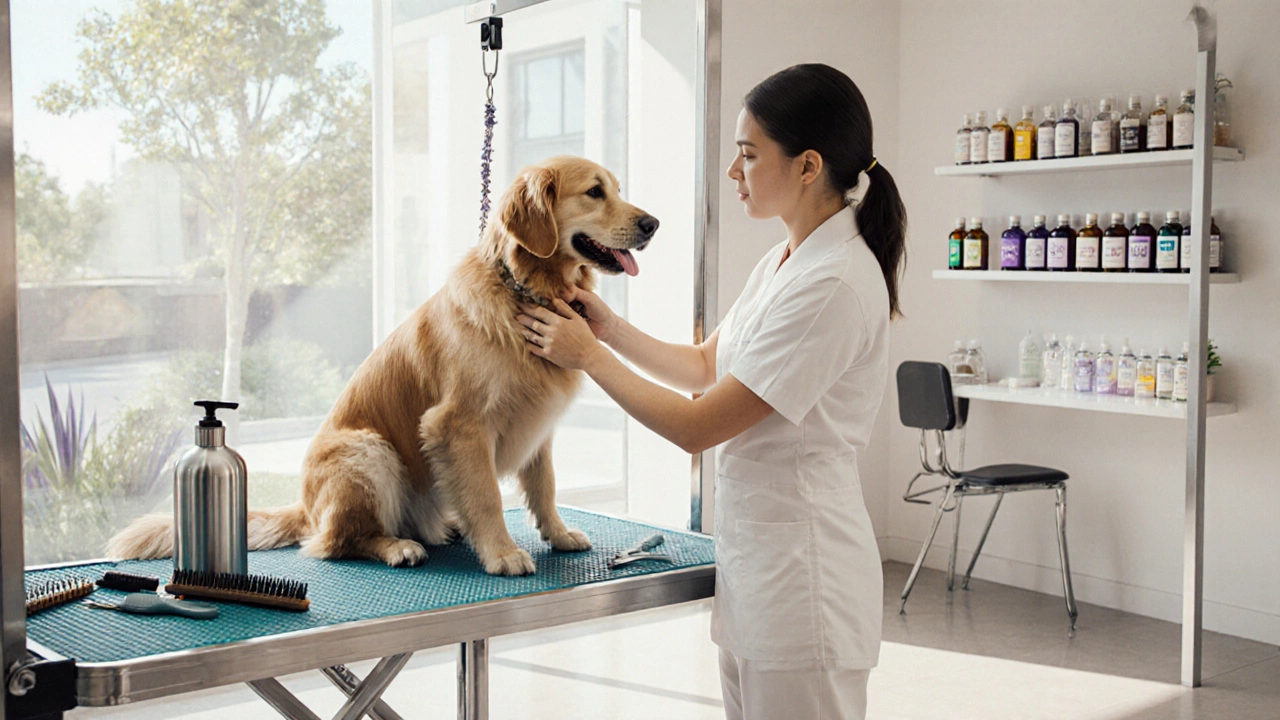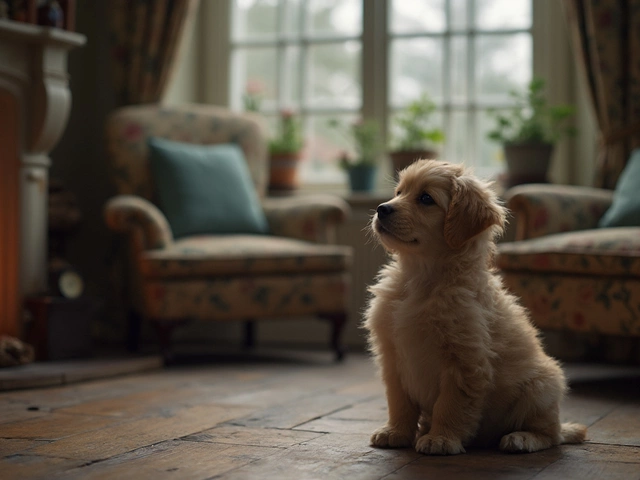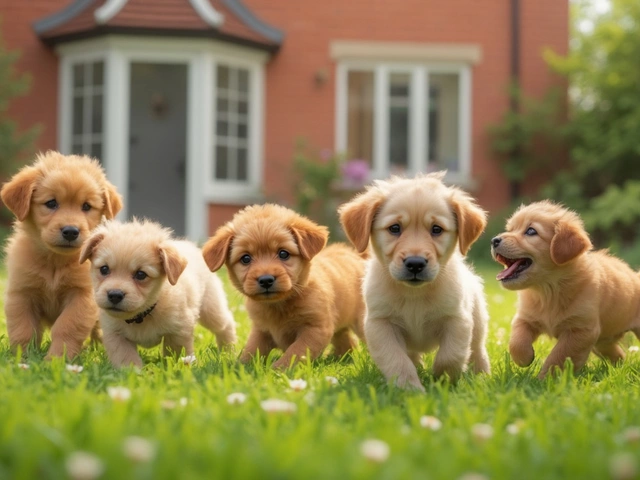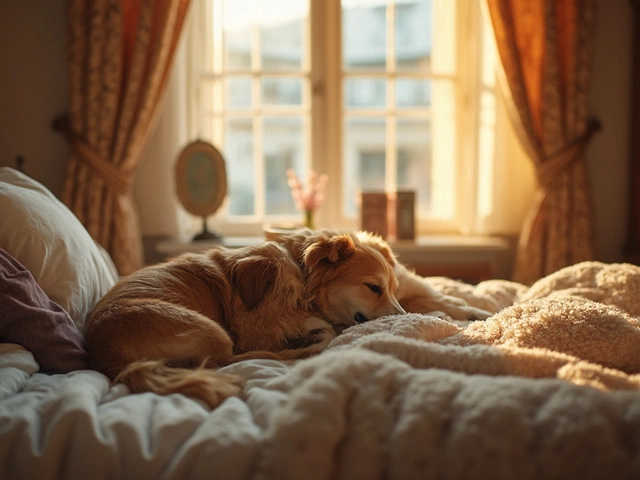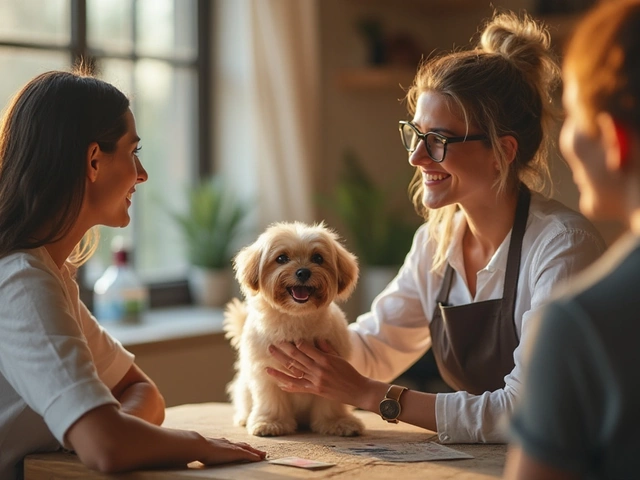Grooming Product Safety & Scent Guide
How to Use This Tool
Filter products by safety rating and see real-time comparisons of scent strength, ingredients, and application tips.
Ever walked out of a grooming salon and noticed your pooch smelling like a fresh‑laundered towel? You’re not imagining it. The fragrant, clean whiff that follows a professional dog grooming process where a trained groomer washes, trims, dries and styles a dog’s coat is the result of a few science‑backed steps, not just a lucky accident.
Key Takeaways
- Professional groomers remove dirt, oil and odor‑causing bacteria before adding scent.
- Specially formulated shampoos, conditioners and deodorizing sprays contain mild surfactants and pet‑safe fragrance oils.
- Heat from dryers opens the cuticle, letting fragrance molecules lock in for longer.
- Proper brushing distributes natural oils, reducing musty smells.
- Maintaining a healthy skin microbiome at home keeps the fresh scent lasting days.
What Actually Happens During a Grooming Session?
A typical appointment includes a bath, a thorough rinse, a gentle dry, brushing, and finishing touches like a light spritz. Groomers start by inspecting the coat for mats, ticks, or skin issues. This visual check is crucial because any trapped debris is a breeding ground for odor‑producing bacteria.
Next comes the soak. Warm water opens the hair cuticle, allowing the cleaning agents to penetrate. The soak isn’t just for comfort; it also helps loosen natural oils and grime that have built up since the last wash.
Shampoo and Conditioner: The Scent Foundations
Groomer’s shampoo a pet‑specific cleanser formulated with mild surfactants, pH‑balanced for canine skin, and often infused with light fragrance such as lavender or citrus works by surrounding dirt and oil with micelles that are rinsed away. Because the formula is designed for dogs, it doesn’t strip the protective lipid barrier, which helps keep the coat supple.
After the rinse, many groomers apply conditioner a post‑shampoo conditioner containing conditioning agents like aloe vera or oatmeal, plus a subtle scent. Conditioner smooths the cuticle, reducing static and preventing matting. The smoothing action also traps the fragrance molecules closer to the hair shaft, so the smell lingers.
Essential Oils and Fragrance Blends
Unlike human shampoos that can use strong essential oils, pet products must stay below a certain concentration to avoid skin irritation. Groomers often add essential oil blend a mix of pet‑safe essential oils such as chamomile, cedarwood, and a hint of peppermint, diluted to under 0.5% for dogs. These oils give a natural, calming aroma while also possessing mild antibacterial properties.
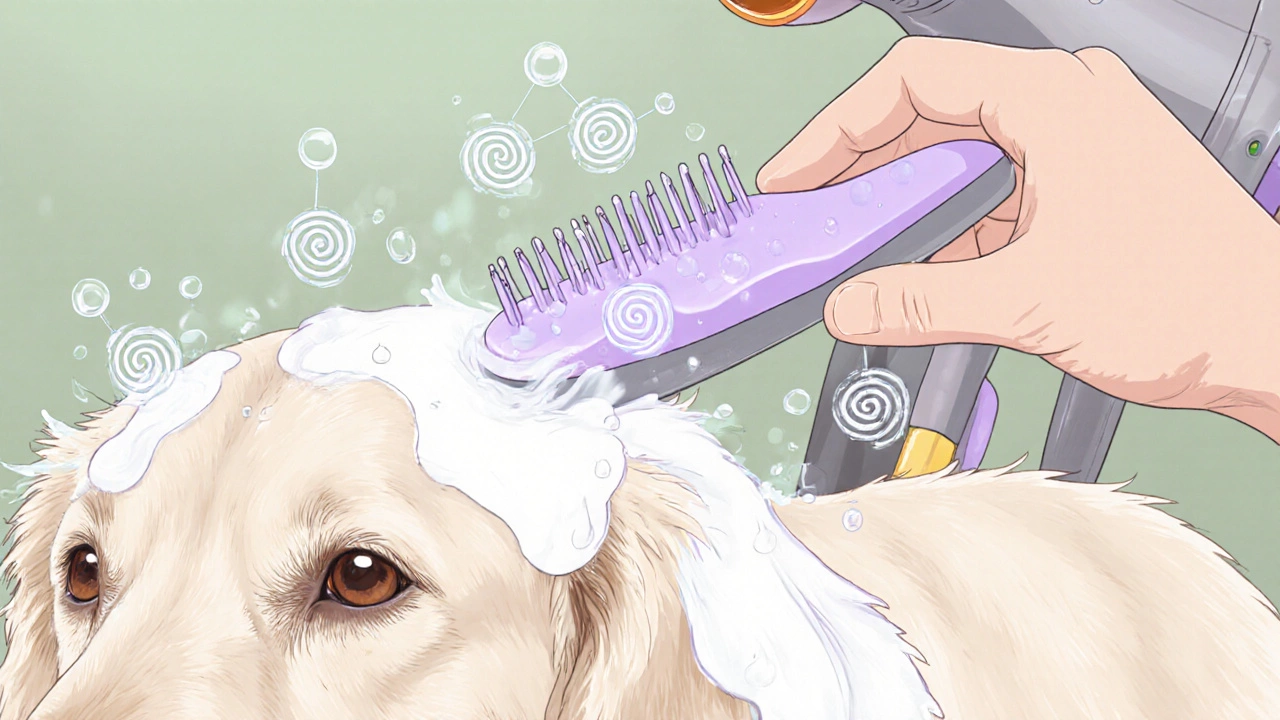
Drying Techniques That Lock In the Aroma
The drying stage does more than just remove water. Professional dryers emit warm air (around 35‑40°C) that continues to open the cuticle for a short period. During this window, any residual fragrance from shampoo, conditioner, or essential oils can bond with the fibers. Some groomers finish with a low‑heat ‘polish’ blow‑dry, which also smooths the coat, making it easier for the scent to cling.
Brushing - The Unsung Scent Distributor
After drying, a brush a grooming brush, often a slicker or bristle brush, used to remove loose hair and evenly distribute natural oils is run through the coat. This step spreads the scent evenly and prevents pockets where odor‑producing bacteria could hide. A well‑brushed coat also reflects light better, giving that ‘fresh‑out‑the‑salon’ shine.
Deodorizing Sprays and Finishing Spritzes
Many salons apply a final deodorizing spray a light, aerosol‑type product formulated with safe antibacterial agents and a faint fragrance, designed to freshen the coat without heavy residue. These sprays often contain ingredients like witch hazel and a tiny amount of essential oil, giving a quick burst of scent that can last up to a week if the coat stays clean.
Skin Microbiome - The Hidden Player
Dogs, like humans, host a community of beneficial bacteria on their skin. A balanced skin microbiome the collection of microorganisms living on a dog’s skin that help protect against harmful pathogens prevents the overgrowth of odor‑producing bacteria such as Pseudomonas. Grooming removes excess oil and dead skin cells, which can otherwise fuel bacterial overgrowth. When the microbiome is in harmony, the dog’s natural scent stays neutral, allowing the added fragrance to stand out.
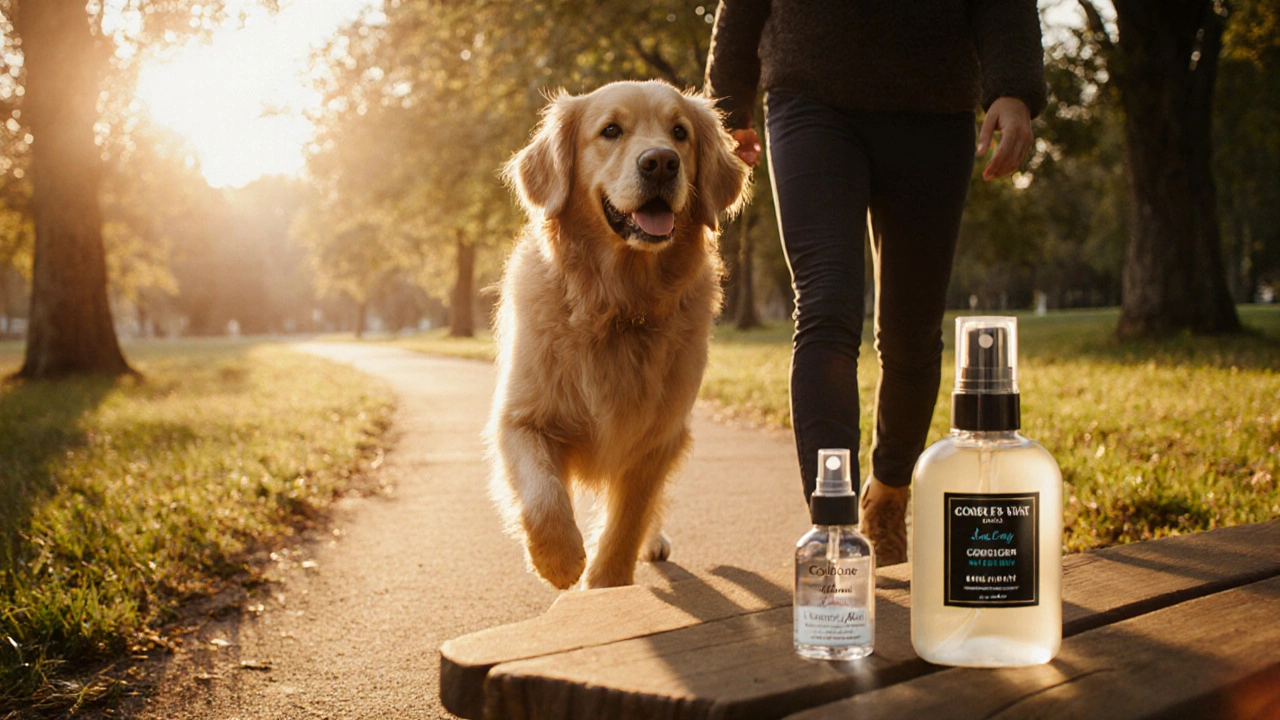
After‑Care Products for Home Maintenance
To keep the salon‑fresh smell between visits, owners can use pet‑friendly cologne a lightly scented spray made specifically for dogs, with low‑irritation fragrance oils or a weekly wipe‑down with a gentle, unscented cleanser. The key is to avoid heavy human perfumes, which can irritate the skin and destroy the natural microbiome.
Comparison of Common Grooming Fragrance Products
| Product | Key Ingredients | Scent Strength | Skin Safety Rating |
|---|---|---|---|
| Groomer’s Shampoo | Mild surfactants, oatmeal, lavender oil (0.3%) | Medium | 9/10 |
| Conditioner | Aloe vera, shea butter, citrus zest (0.2%) | Light | 9/10 |
| Deodorizing Spray | Witch hazel, peppermint oil (0.1%), anti‑bacterial agents | Fresh | 8/10 |
Common Myths About the “Fresh” Dog Smell
- Myth: The scent is just the shampoo’s perfume.
Reality: While shampoo adds a base note, the combination of conditioner, essential oils, and the drying process amplifies and locks the fragrance.
- Myth: All dogs smell the same after grooming.
Reality: Breed coat type, skin condition, and individual grooming product choices affect the final aroma.
- Myth: Heavy perfume makes dogs smell better.
Reality: Strong human fragrances can irritate a dog’s skin and mask the natural, clean scent that grooming creates.
Frequently Asked Questions
Why does my dog smell different after a bath compared to a home wash?
Professional groomers use veterinary‑grade shampoos with balanced pH and added essential oils that most home products lack. The controlled drying temperature also helps lock in those scents.
Can I use human shampoo on my dog?
It’s not recommended. Human shampoos often have a higher pH, which can strip the natural oils and disrupt the skin microbiome, leading to irritation and a less pleasant odor.
How often should I bring my dog to the groomer for that fresh smell?
Every 4‑6 weeks works for most breeds. Over‑grooming can dry out the skin, while under‑grooming lets odor‑causing bacteria build up.
Are essential oil blends safe for all dogs?
Pet‑safe blends stay under 0.5% concentration and avoid oils like tea tree or eucalyptus, which can be toxic. Always check that the product is labeled specifically for dogs.
What can I do at home to keep the scent lasting longer?
Regular brushing, a weekly wipe with a pet‑safe cleanser, and occasional use of a light pet‑friendly cologne will help maintain the fresh smell between professional visits.
So the next time you leave the groomer’s salon with a pup that smells like a spring breeze, you’ll know it’s not magic. It’s a blend of science, proper product choice, and a touch of aromatic craftsmanship.

